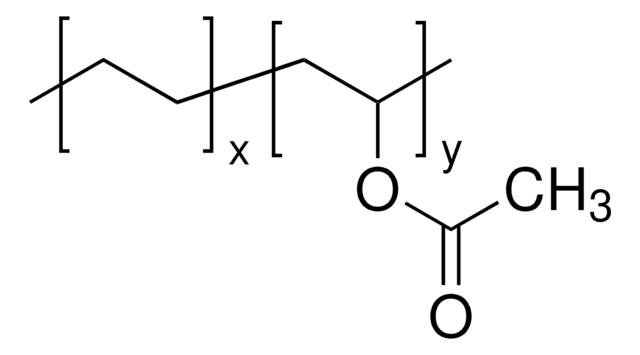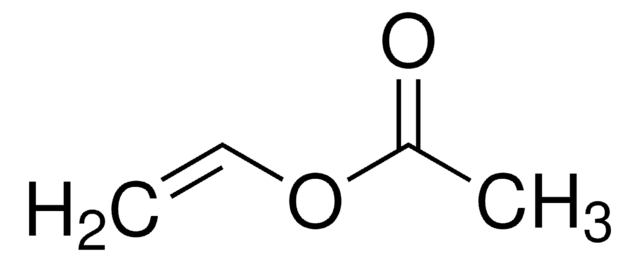437239
Poly(ethylene-co-vinyl acetate)
vinyl acetate 18 wt. %, melt index 8 g/10 min (190°C/2.16kg), contains 200-900 ppm BHT as inhibitor
About This Item
Produits recommandés
Forme
beads
Niveau de qualité
Température d'inflammation spontanée
500 °F
Indice de fusion
8 g/10 min (190°C/2.16kg)
Contient
200-900 ppm BHT as inhibitor
Composition
vinyl acetate, 18 wt. %
Dureté
38 (Shore D, ASTM D 2240)
Pf
87 °C
Température de transition
softening point 61 °C (Vicat, ASTM D 1525)
Densité
0.94 g/mL at 25 °C
Chaîne SMILES
C=C.CC(=O)OC=C
InChI
1S/C4H6O2.C2H4/c1-2-3-4(5)6;1-2/h2H,1,3H2,(H,5,6);1-2H2
Clé InChI
DQXBYHZEEUGOBF-UHFFFAOYSA-N
Vous recherchez des produits similaires ? Visite Guide de comparaison des produits
Catégories apparentées
Application
Caractéristiques et avantages
Mention d'avertissement
Warning
Mentions de danger
Conseils de prudence
Classification des risques
Carc. 2
Code de la classe de stockage
11 - Combustible Solids
Classe de danger pour l'eau (WGK)
WGK 2
Point d'éclair (°F)
Not applicable
Point d'éclair (°C)
Not applicable
Faites votre choix parmi les versions les plus récentes :
Déjà en possession de ce produit ?
Retrouvez la documentation relative aux produits que vous avez récemment achetés dans la Bibliothèque de documents.
Les clients ont également consulté
Notre équipe de scientifiques dispose d'une expérience dans tous les secteurs de la recherche, notamment en sciences de la vie, science des matériaux, synthèse chimique, chromatographie, analyse et dans de nombreux autres domaines..
Contacter notre Service technique








